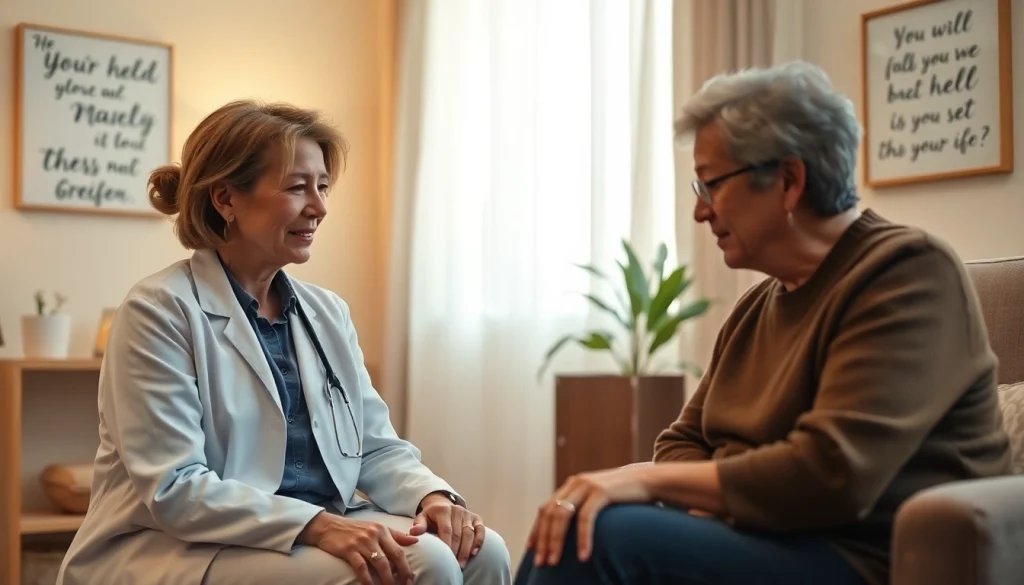Understanding Grief and Its Impact
Grief is an emotional response that often follows the loss of a loved one, a significant relationship, or even a cherished dream. It is a natural human reaction, deeply personal and complex. When dealing with grief, individuals may experience a wide range of feelings and reactions as they navigate the process of loss. Understanding grief is the first step toward healing, and recognizing its various facets can be incredibly beneficial for both the individual experiencing it and those who are providing support. For many, dealing with grief becomes a long journey, and knowledge about it can ease the path forward.
What is Grief?
Grief can be defined as the intense sorrow that follows loss. It is not limited to death—grief can occur after the end of a relationship, job loss, or any major change that disrupts one’s life. Psychologists often describe it as a multi-faceted response affecting the emotional, physical, social, and spiritual aspects of life. Grief can manifest in various ways, including feelings of sadness, confusion, anger, or even relief, depending on the situation and the individual’s relationship with what was lost.
Types of Grief: From Anticipatory to Complicated
There are different types of grief that individuals may experience, each with unique characteristics:
- Anticipatory Grief: This occurs before a loss happens, such as when a loved one is terminally ill. It’s a complex blend of mourning what is to come while still hoping for recovery.
- Disenfranchised Grief: This type arises when a person’s grief is not openly acknowledged or validated by society, such as in cases of unanticipated losses or non-traditional relationships.
- Complicated Grief: This is an intense and prolonged form of grief that can interfere with a person’s ability to function in daily life. Individuals with complicated grief may feel stuck in their mourning, unable to move towards acceptance or healing.
- Chronic Grief: This is a form of grief that remains unresolved over a long period, often accompanied by a pervasive sense of loss that disrupts life.
The Emotional and Physical Effects of Grieving
Grieving is not just an emotional process; it affects the body as well. Common emotional reactions include:
- Sadness
- Anger
- Guilt
- Anxiety
- Relief
Physically, individuals may experience fatigue, difficulty sleeping, changes in appetite, and a general sense of malaise. These symptoms highlight the importance of caring for both emotional and physical well-being during the grieving process.
Healthy Ways to Cope with Grief
Finding healthy coping mechanisms is crucial for managing grief. While each person’s experience is unique, there are effective strategies that can help facilitate healing and support resilience.
Establishing a Support System
One of the most significant aspects of coping with grief is having a reliable support system. This can include:
- Family members
- Close friends
- Support groups
- Online forums
Talking about feelings and sharing memories of the loved one can provide solace. Remember, it’s crucial to connect with those who understand and can offer empathy rather than judgment.
Practices for Self-Care
Self-care is vital in grief recovery. Some self-care practices include:
- Physical Activity: Engaging in regular exercise can boost endorphins and improve mood.
- Meditation and Mindfulness: These practices can center thoughts and provide peace amidst chaos.
- Creative Outlets: Exploring creativity through art, music, or writing can allow for emotional expression.
- Healthy Eating: Maintaining a balanced diet supports physical health and can influence mood.
These practices encourage a holistic approach to healing and can significantly alleviate feelings of grief.
Expressing Emotions: Healthy Outlets
Finding healthy outlets for emotions is an essential part of coping with grief. This can involve:
- Journaling: Writing down thoughts and feelings can help to clarify emotions and provide a healthy outlet.
- Talking It Out: Speaking with a trusted friend, family member, or therapist can facilitate healing.
- Artistic Expression: Engaging in painting, drawing, or music can provide an emotional release.
- Physical Activities: Practicing yoga or martial arts might also help in channeling emotions constructively.
Expressing what one feels, rather than bottling it up, can significantly aid the grieving process.
Navigating the Stages of Grief
Grieving does not follow a linear path; instead, it often involves different emotional stages. Understanding these stages can provide clarity for both the grieving person and their support network.
Understanding the Five Stages
The Kübler-Ross model outlines five stages of grief:
- Denial: The initial shock of loss can leave one feeling numb.
- Anger: Frustration and helplessness often manifest as anger.
- Bargaining: This stage often involves negotiations for an extended life or deeper connection with the lost one.
- Depression: Deep sadness sets in as the reality of loss becomes apparent.
- Acceptance: This final stage is about coming to terms with the loss and starting to move forward.
Common Experiences During Each Stage
Each stage brings its distinct experiences and feelings. For instance, during denial, one may experience disbelief about the loss. In contrast, anger can stem from frustration regarding the loss itself or feeling abandoned. It is crucial to allow oneself to experience these stages without placing judgment or timelines on recovery.
How to Move Forward Through Grief
Moving forward through grief involves embracing the process. Some strategies include:
- Allowing oneself to feel all emotions, good or bad.
- Establishing new routines that honor the memory of the lost one.
- Setting small, achievable goals for every day.
- Seeking both solitude and community, depending on one’s emotional needs.
Moving forward does not mean forgetting; instead, it signifies learning to live with the absence and cherishing memories.
When to Seek Professional Help
While grief is a natural process, there are times when professional help may be beneficial or necessary. Recognizing these moments is essential for healing.
Identifying Signs That You Need Support
Some indicators that it might be time to reach out for professional assistance include:
- Feelings of overwhelming sadness that do not improve over time.
- Difficulty performing daily activities or responsibilities.
- Withdrawal from friends and family.
- Persistent physical symptoms linked to emotional distress.
- Thoughts of self-harm or being unable to cope.
Types of Counseling Available for Grieving Individuals
Several types of counseling may be beneficial, including:
- Individual Therapy: Tailored one-on-one support to process grief.
- Group Grief Therapy: Providing a sense of community and shared understanding.
- Family Counseling: Addressing grief within the family dynamic.
- Support Groups: Meeting with others who have experienced similar losses.
Resources for Finding Help
Many organizations and platforms offer resources for those grieving. These may include local hospitals, mental health professionals, community centers, and online support networks dedicated to helping those in grief. Taking the initiative to seek help can significantly change the healing trajectory.
Creating Lasting Memories to Honor Loved Ones
Honoring a loved one after their passing can provide comfort and a sense of connection. There are numerous ways to ensure their memory lives on.
Ways to Memorialize Those You’ve Lost
Creating memorials is a personal way to celebrate the life of a lost loved one. Some ideas include:
- Planting a Tree or Garden: This serves as a living memory that grows with the seasons.
- Creating Photo Albums: Assembling memories through photos can be a comforting reminder of the moments shared.
- Writing Letters: Writing letters to the deceased can be therapeutic, conveying feelings that one may wish to express.
Rituals and Remembrance Practices
Engaging in rituals can offer closure and connect individuals with their feelings. Examples include:
- Candle Lighting Ceremonies: Lighting a candle on special days can symbolize remembrance.
- Anniversary Tributes: Observing anniversaries of the loved one’s birth or passing can foster remembrance and reflection.
- Memory Stones or Wall: Creating a shared place for others to contribute memories can symbolize lasting connection.
How to Celebrate Life While Dealing with Grief
Celebrating life amidst grief can help balance sorrow with moments of joy. Ways to celebrate include:
- Sharing Favorite Memories: Organizing gatherings to reminisce can create a supportive atmosphere.
- Engaging in Activities the Deceased Loved: Continuing to participate in activities that the lost loved one enjoyed can keep their spirit alive.
- Making Contributions to Causes: Charitable donations or volunteer work in the name of the loved one can provide a sense of purpose.
Ultimately, celebrating life while navigating grief helps to cultivate a space where joy and sorrow coexist.








